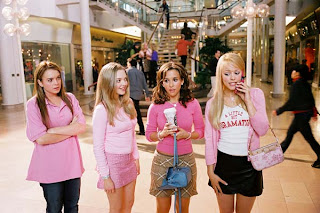Study links teenage bullying to social status
As students get more popular, they're more likely to harass their peers, finds a study that reinforces an axiom of high school life.
Scientists have confirmed an axiom of teenage life: Kids intent on climbing the social ladder at school are more likely to pick on their fellow students.
The finding, reported in Tuesday's edition of the American Sociological Review, lends an air of authenticity to TV shows like "Gossip Girl" and the 2004 movie "Mean Girls." More importantly, it may suggest that efforts to combat bullying in schools should focus more closely on social hierarchies.
"By and large, status increases aggression," said sociologist Robert Faris of UC Davis, who led the study.
Faris and a colleague studied the relationships among 3,722 middle and high school students over the course of an academic year and found that the teenagers' propensity toward aggression rose along with their social status. Aggressive behavior peaked when students hit the 98th percentile for popularity, suggesting that they were working hard to claw their way to the very top.
However, those who were in the top 2% of a school's social hierarchy generally didn't harass their fellow students. At that point, they may have had little left to gain by being mean, and picking on others only made them seem insecure, Faris said.
The researchers quantified this by administering surveys to eighth-, ninth- and 10th-graders in 19 schools in North Carolina in fall 2004 and again in spring 2005. Students were asked to name up to five best friends. They were also asked to name up to five students they had picked on in the previous three months, and up to five students who had picked on them.
In cases where aggression occurred, students classified the events as physical attacks, direct verbal harassment or indirect offenses like spreading rumors or ostracizing classmates.
The surveys also asked about the students' grades, participation on sports teams, dating history, race and family income.
The results allowed Faris to create "social maps" of each school, charting all the positive and negative relationships among students.
At the beginning of the school year, 40% of students said they had harassed another classmate; in the second survey in the spring, 33% said they had done so. Higher social status — defined as occupying the hub of a school's social network rather than the periphery — in the fall predicted higher rates of aggression in the spring.
On average, each student was aggressive toward 0.63 fellow students at the end of the school year. A few particularly aggressive students — socially-central athletes — harassed as many as nine kids apiece.
Though the study reinforces popular stereotypes about social cliques in schools, it contradicts academic notions about aggression, Faris said.
"For a long time, there was emphasis on seeing aggression as a product of the home environment," he said. "Here we're getting a different picture."
The findings suggest that anti-bullying programs need to focus on the role of the nonviolent majority of students, said UCLA psychologist Jaana Juvonen, who studies bullying in schools.
"It's really critical for bystanders to speak up," said Juvonen, who wasn't involved in the study. "If there's an aggressive kid everyone bows down to, it sends a signal to the bully that what they're doing is working."
Rosalind Wiseman, a 17-year teaching veteran, said the study reflected the experience of many educators. It was just such behavior that prompted her to write "Queen Bees and Wannabes," the book that inspired the film "Mean Girls," in which a nice and slightly nerdy girl played by Lindsay Lohan becomes increasingly catty as her popularity soars.
"It's always nice to have backup," Wiseman said.

No comments:
Post a Comment